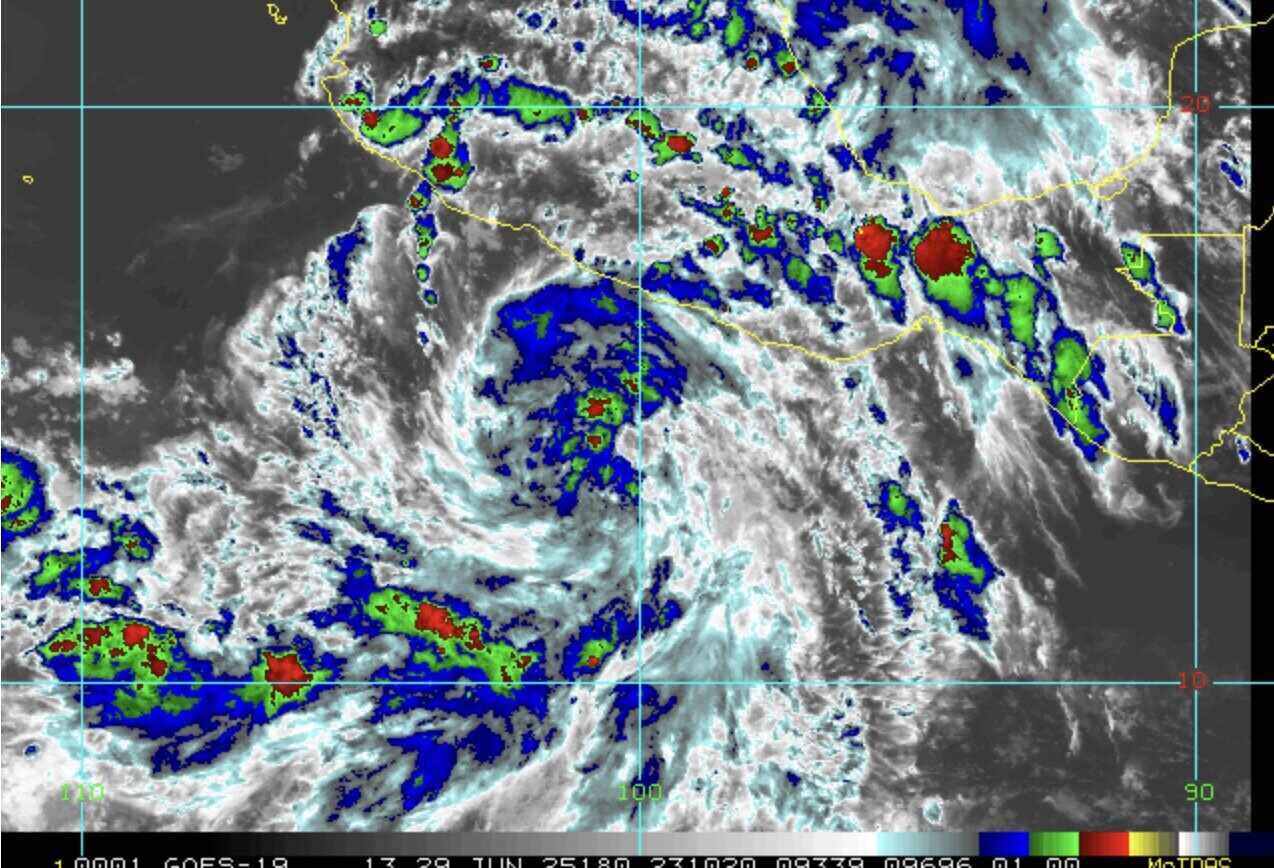The latest hurricane information on June 30 from the US National Hurricane Administration (NOAA) said that Hurricane Barry in the Atlantic and Hurricane Flossie in the eastern Pacific are both expected to not have much impact on US weather. However, parts of Mexico could see landslides, up to 250mm of rain and strong winds.
Although not affected by the two storms above, the Midwest and Eastern regions of the US are recording severe thunderstorms with strong winds, hail and the risk of flooding until June 30.
According to AccuWeather meteorological experts, the humid hot air mass is colliding with a moving cool air mass, leading to dangerous thunderstorms.
As the two latest storms Barry and Flossie moved eastward on June 30, AccuWeather meteorologist Peyton Simmers warned that rush hour travel in major cities such as New York, Philadelphia and Washington, D.C. could be affected.
Hurricane Barry that formed in the Atlantic and Hurricane Flossie that formed in the Pacific both had winds of about 65km/h on June 29, just enough to classify as a tropical storm.
Many areas are expected to see up to 250mm of rainfall due to the impact of Hurricane Barry, AccuWeather hurricane expert Alex DaSilva warned.
"The main problem is heavy rain and the risk of landslides. Some areas like Acapulco are still recovering from Erick, he said.
Hurricane Erick - a storm in the Pacific Ocean - made landfall on the southern coast of Mexico on June 19 as a Category 3 hurricane, bringing strong winds, heavy rain and widespread flooding in the states of Oaxaca and Guerrero.
Secretary Secretary Secretary is expected to weaken rapidly as it moves inland.

In the Pacific, tropical depression 6-E strengthened into tropical storm Flossie on June 29. Flossie is moving west-northwest at a speed of about 15 km/h.
"Flossie is in western Mexico, in a very favorable environment for intensification. Unlike the Atlantic storm, Flossie could rapidly intensify. We predict that Flossie will become a Category 1 hurricane on July 1," DaSilva said.
The American hurricane forecaster added that Flossie could reach Category 2 hurricane status by the evening of July 2 or July 3 but still operate offshore. However, the path of Flossie is close enough to cause strong gusts of wind for the coastal areas of Mexico.
Forecast rainfall of 75-150mm, some places may reach 250mm, in the states of Oaxaca, Guerrero, Michoacan, Colima and Jalisco in the next few days, the weather bulletin of the US National Hurricane Center noted.









